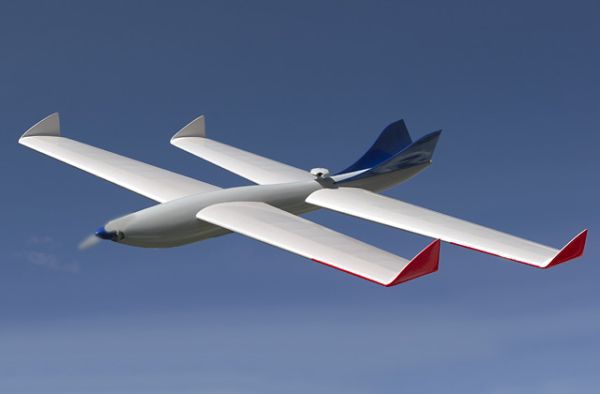
UAV, or Unmanned Aerial Vehicles, are used to monitor activities on earth, which is either too risky for humans or beyond their limits. But, with time, more emphasis is being placed on the ‘greenness’ of the vehicle. Function and form are important, but engineers are making sure that today’s UAV’s are not an environmental hazard. So, besides UAV’s being used for war or spying purposes, they are also being used to find ways to make Earth a better planet. This list aims to decode those UAV’s which are used for those ‘green purposes’. Read on.
1. HADA Electric UAV
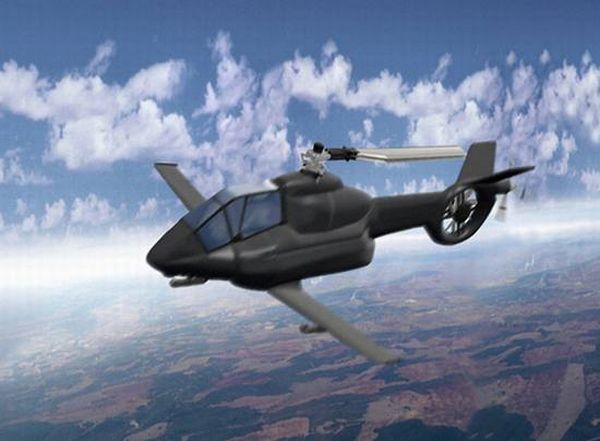
Spain’s National Institute of Aerospace Technology has innovated the first green electric UAV and decided to call it HADA Electric. It is a combination of a helicopter and an airplane. It uses VTOL (Vertical Take Off and Landing) technique. It guzzles only one third of the fuel as done by a regular airplane. The project head Manuel Molero has stated that it can also be manned. It can be used to transmit images in real time, ferrying instruments from one place to another, and for patrolling borders.
2. Northrop Grumman RQ-4 UAV
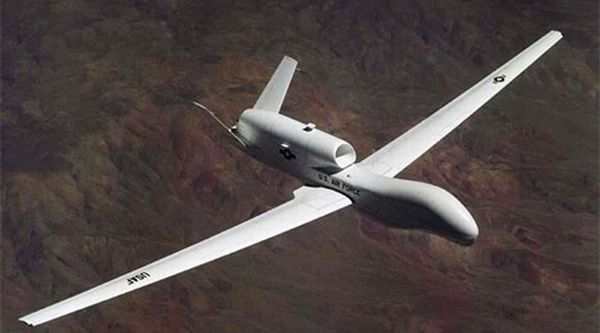
NASA has decided to give a make-over to Grumman RQ-4 and has transformed it from a land blasting bomber to a more serene environment friend. It will now be used for research flights concerned with verifying the measurements of atmospheric gases made by NASA’s AURA satellite. If a satellite gets damaged, it cannot be brought back from space for rectification. So, dedicated machines are needed to record the measurements so that data doesn’t get lost and to make sure that it’s right.
3. KIST solar-powered UAV

A MoU has been signed between two Korean organizations, Korean Aerospace University and Korea Institute of Science and Technology. They have decided to develop a solar powered UAV, which can hover at an altitude for 20,000 m for many months before coming down for tweaks. It will use design technology from KAU and power its way to the sky with KIST’s solar power mechanism. The wingspan is 40 m long. Solar panel attached to the wings, store the energy in a Li-ion battery module to power the UAV when the sun bids goodbye.
4. Solar-powered UAV by Queensland University of Technology

Researchers at the Queensland University of Technology are working on a solar powered UAV for round-the-clock surveillance. With a wingspan of 2.5 m, the Green Falcon, as it’s called, is equipped with remote sensing visual data capabilities to track down forest fires in Australia which cause loss of life and property. This UAV can also be used to relay information about people in danger, through infrared cameras mounted on it. It can also be used for atmosphere and weather research and prediction, ocean monitoring etc.
5. Aurora’s solar-powered UAV
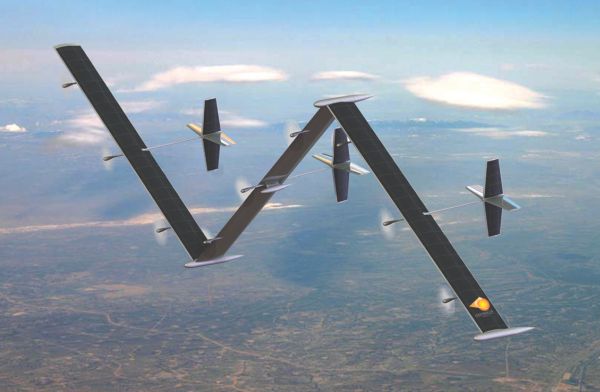
DARPA’s Vulture Program required an UAV, and Aurora Flight Sciences have developed the perfect model. AFS claims that it can fly at altitudes exceeding 60,000 ft, for 5 years on solar power. The aircraft comprises of three aircrafts arranged in Z configuration for maximum collection of sunlight during the day. The 500 feet long aircraft would charge itself during the day, and flatten at night to increase aerodynamics. AFS claims that it can run at 63 m/s during day, while at night the speed is reduced to 43 m/s.
6. Bye Aerospace hybrid UAV
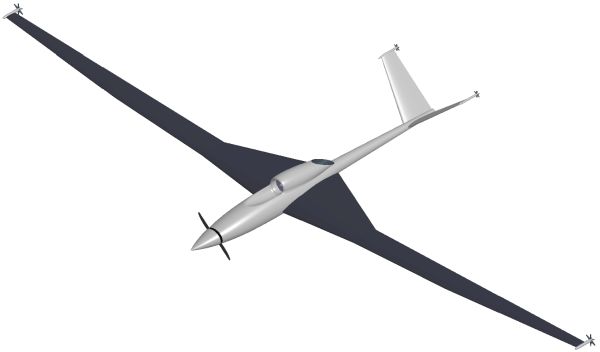
Bye Aerospace has come up with a design for the UAV of the future. The UAV will be solar powered and is being made with collaboration with Ascent Technologies. It is being made keeping in mind the military uses, but will also be manufactured commercially. Silent Sentinel, as it’s called, is a zero emission aircraft. It can be coupled with an advanced Williams FJ33 turbofan for primary propulsion.
7. Fuel Cell UAV by Georgia Tech
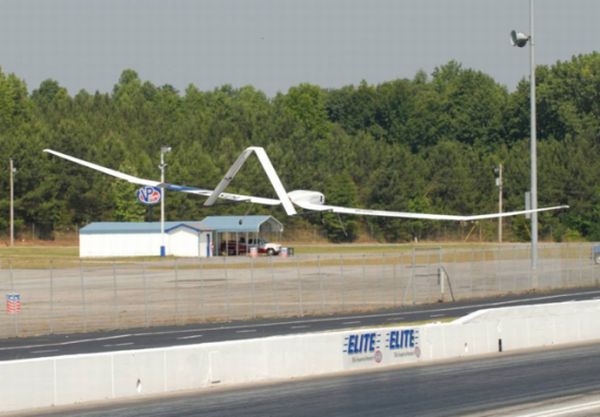
Georgia Tech has been known to do things a bit differently, and they have kept the trend alive by conducting a successful experiment of a UAV powered by a 500-watt fuel cell. With a 22 ft. wingspan, it is claimed to be the largest UAV to fly on a Proton Exchange Membrane fuel cell, using compressed hydrogen. Georgia Tech has used technology in a way that it does not require any boosters to take off.
8. Ion Tiger Fuel Cell UAV
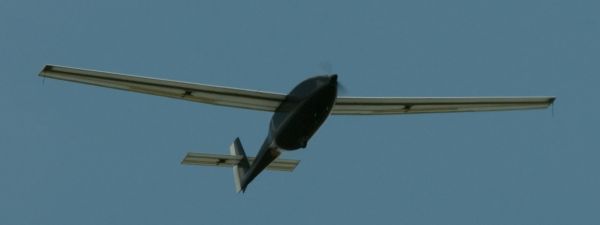
This hydrogen cell powered Ion Tiger has set a record of flying 23 hours and 17 minutes at Aberdeen Proving Ground. It has been developed by Naval Research Laboratory. The USP is that it provides a zero emission flight. And due to electric fuel cell propulsion system, it has low noise. It can be used for patrolling and for weather research.
9. Falx Air’s coaxial UAV helicopter
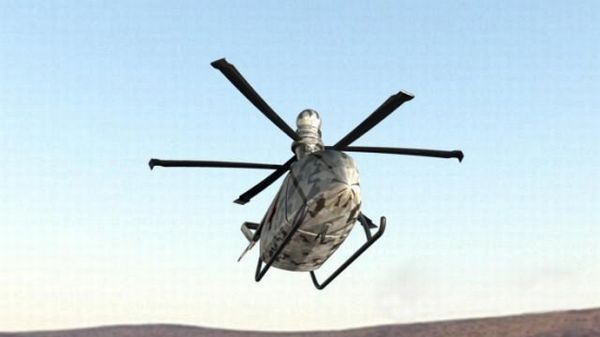
A UAV powered by an electric hybrid engine, Falx Air has decided to carry on the tradition of fast charging battery systems. For keeping weight under control, the company has decided to use materials under aerospace certified composite materials. It is designed to carry a payload of 70 kg, and for long distance surveillance.
10. Drones powered by dye-sensitized solar cells
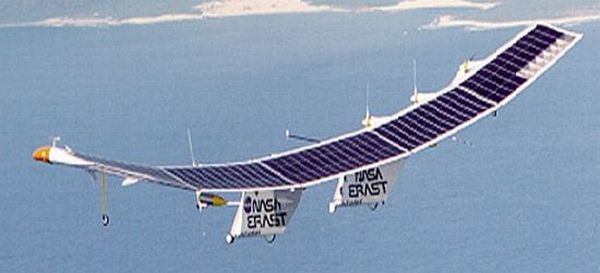
Researchers at University of Washington are developing an UAV using purple bacteria. They are developing a synthetic dye from it. A pigment in the dye can convert CO2 to carbohydrates. Researchers are trying to mirror the mechanism to convert sunlight into electricity. These type of cells never need to be changed.




